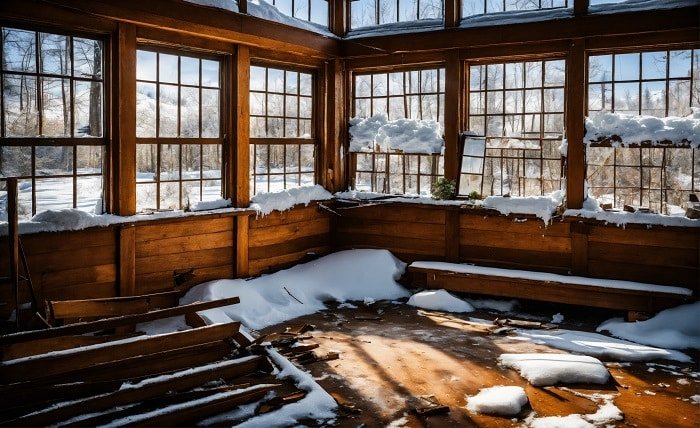Heavy Snow Ahead? Here’s How to Winter-Proof Your Home

Winter can be beautiful — with sparkling snow blanketing the landscape and the cozy feeling of staying warm indoors. But heavy snow also brings its own set of challenges for homeowners. From roof damage and frozen pipes to blocked driveways and chilly drafts, winter weather can put your home to the test. The good news? With some careful preparation, you can winter-proof your home to withstand even the heaviest snowfalls, keeping your family safe, warm, and comfortable all season long.
Here’s a comprehensive guide on how to prepare your home for heavy snow ahead:
1. Inspect and Strengthen Your Roof
Your roof acts as the primary barrier against snow buildup. Heavy snow can exert significant pressure on your roof structure, which may cause damage or even collapse in severe situations. This applies to all roofing types, including metal roof sheets, which are durable but still require proper care.
- Check for Damage: Inspect your roof for missing or damaged shingles, cracks, or leaks. Repair any issues before winter arrives.
- Clean Gutters and Downspouts: Clear leaves, debris, and dirt so melting snow can flow freely away from your roof and foundation.
- Reinforce Roof Supports: If you live in a heavy snow region, consider consulting a professional to ensure your roof’s supports can handle the added weight.
- Remove Snow Safely: After heavy snowfalls, use a roof rake to clear excess snow, but avoid climbing on the roof yourself. Hiring a professional is often safer and wiser.
2. Insulate and Seal Your Home
Cold air sneaking through cracks and gaps can drastically increase your heating bills and make your home uncomfortable.
- Seal Gaps and Cracks: Check around windows, doors, and the foundation for drafts. Use weatherstripping, caulk, or spray foam insulation to seal any openings.
- Add Insulation: Make sure your attic and walls are properly insulated. Good insulation not only keeps the cold out but also prevents ice dams from forming on your roof.
- Check Doors and Windows: Consider upgrading to energy-efficient windows and insulated doors if your current ones are old or damaged.
3. Protect Your Pipes
Frozen pipes can burst, causing expensive water damage and repairs.
- Insulate Pipes: Use foam sleeves or insulation tape on pipes, especially those in unheated areas like basements, attics, and crawl spaces.
- Keep Heat Flowing: Open cabinet doors under sinks to let warm air circulate around plumbing.
- Let Faucets Drip: During extreme cold snaps, let a faucet drip slightly to keep water moving and reduce the risk of freezing.
- Shut Off Outdoor Water: Drain garden hoses and shut off outdoor water valves to prevent pipe damage.
4. Prepare Your Heating System
Your heating system will be working overtime during snowy months, so make sure it’s in peak condition.
- Service Your Furnace: Schedule a professional inspection and tune-up to ensure your furnace is clean, efficient, and safe.
- Replace Filters: Change or clean furnace filters regularly for better airflow and heating efficiency.
- Test Carbon Monoxide Detectors: Ensure these life-saving devices are functioning and replace batteries as needed.
5. Stock Up on Winter Supplies
Being ready with the right tools and supplies can save you headaches when the snow hits hard.
- Snow Removal Tools: Have a sturdy snow shovel, a roof rake, and ice melt or sand ready.
- Emergency Kit: Include flashlights, batteries, blankets, bottled water, non-perishable food, and a first aid kit.
- Backup Power: Consider a generator if you live in an area prone to power outages.
6. Clear Your Driveway and Walkways
Heavy snow and ice can make paths treacherous and block access.
- Pre-Treat Surfaces: Spread salt or ice melt before snow falls to reduce ice buildup.
- Shovel Promptly: Remove snow as soon as possible to prevent it from compacting and turning into ice.
- Use Sand for Traction: If you’re concerned about slipping, sand can provide extra grip.
7. Trim Trees and Branches
Snow-laden branches can break and cause damage to your home or power lines.
- Trim Overhanging Limbs: Cut back weak or dead branches near your house to reduce the risk of falling limbs.
- Clear Around Power Lines: If branches are near power lines, hire professionals to safely trim them.
8. Protect Outdoor Equipment and Plants
Don’t forget to winterize your outdoor spaces as well.
- Store Outdoor Furniture: Bring cushions indoors and cover or store furniture.
- Wrap Sensitive Plants: Use burlap or frost cloths to protect delicate shrubs and trees.
- Drain Irrigation Systems: Prevent frozen pipes in irrigation by draining water lines.
Final Thoughts
Preparing your home for heavy snow is about foresight and smart action. The effort you put into winter-proofing now can save you from costly repairs, inconvenience, and safety risks later. By inspecting and reinforcing your roof, insulating your home, protecting your plumbing, maintaining your heating system, and prepping your outdoor areas, you’ll be ready to face whatever winter throws your way.
Remember, when it comes to heavy snow, preparation is your best defense. Stay warm, stay safe, and enjoy the magic of winter without worry!




